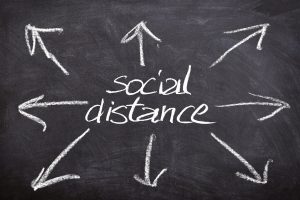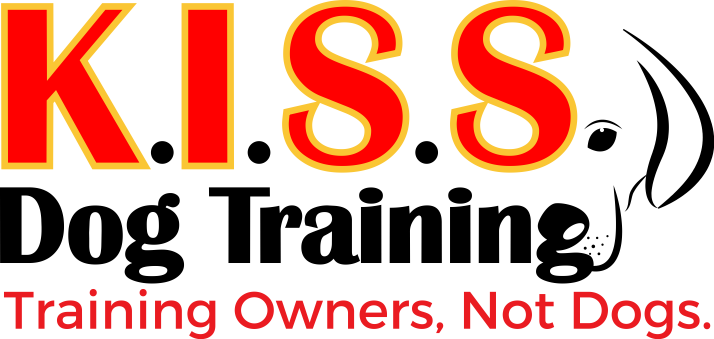Covid-19 Corona Virus…Possible Puppy/Dog Issues As We Return to Normal
 There are a lot of new puppy owners or even older dog owners out there and many are finding it really hard to socialize their pups in this world of social distancing and in-home confinement during this Covid-19 scenario… I have talked to several trainers and all of us are concerned with the lack of opportunities for puppies or dogs to socialize and learn the world is safe and explorable place during this critical time… Ideally with puppies we should be 100 % focused on socialization from week 3 to about week 15… But when nothing is open, or businesses are curbside only this can be really hard…. What do we do? The answer is simple the best you can…
There are a lot of new puppy owners or even older dog owners out there and many are finding it really hard to socialize their pups in this world of social distancing and in-home confinement during this Covid-19 scenario… I have talked to several trainers and all of us are concerned with the lack of opportunities for puppies or dogs to socialize and learn the world is safe and explorable place during this critical time… Ideally with puppies we should be 100 % focused on socialization from week 3 to about week 15… But when nothing is open, or businesses are curbside only this can be really hard…. What do we do? The answer is simple the best you can…
I am going to briefly talk about 3 topics that could be issues as we roll back into normality…
- Is there a chance that as we come out of this, we will see an increase in fearful, more anxious and less trusting dogs??? Yep…
- Is there a chance that when return to work we will have dogs with issues of separation anxiety since they have been with us nonstop for a minimum of 30 days??? Yep…
- Is there a chance that our dogs will back slide with potty training when we go back to work since the dog has been used to going out when ever they want since we have been at home??? Yep….
The best we can do is practice as much as we can in these three categories and to know the signs to look for with possible issues, but even more it is to set routines based off what we know will be coming not what we are dealing with…. Here are some examples:
Socialization:
First off here is a link to our Puppy Socialization Checklist we want folks to complete by the age of 20 weeks with puppies, and after looking at it, much can not be accomplished in the world we find ourselves in right now… But there are tons of things you can do! So, let’s not focus on what we can’t do and focus on what we can do!
What about people? Early on we were having folks call 10-15 local vets and asking if they could just bring the puppy by for a treat and a “Hello” visit… Where the dog just comes in and says hello and gets cookies from the staff and vet… We are now seeing many more vets going to the curbside service that makes this type of visit hard but not impossible if you are willing to do the leg work….
Another idea was local hardware or pet care stores for these quick “Hello” visits, but this starts to bring about the question of integrity to the “Stay in Place” idea… If you needed to go in and buy food or other necessities then this might be an option but going to often simply is not safe for you, the public or the pooch ☹
Now, what I would recommend would be just sitting outside your house (on the front Porch) or at a city park (with safe distances) with your puppy on a long line and working basic classical conditioning and pairing the word friends with treats!!! I would simply offer the pup the treat upon seeing any human being or dog and after the word “Friends”. The goal would be for the dog to associate people and other dogs (albeit at distance) with treats and the special word or cue of “Friends”
This will obviously help but not to the extent of a puppy who is allowed to meet and learn that people or dogs are fun and safe… What would this fear look like?
- Panting in the presence of these things
- Yawning in the presence
- Actively trying to avoid or escape from these things
- Barking, growling, whining (even lunging)
What should you do if you see these things? Add more distance between you and the item and work with tons of yummy treats… Just remember the 3 things necessary to counter condition an associated response (one that has already been learned)
- High Frequency (Everyday Practice)
- Short Duration (Sessions that only last about 15 minutes
- Under threshold (working at a distance the pup can handle)
- If you push the pup past what they can handle, and you will make things worse
So, what does all of this mean? Do what you can and get creative! Lots of dogs will be fine through even situations like what we are going through but be ready to hit socialization hard and heavy the instant we are released from our in-home isolation, and call a local trainer to help. Learned behaviors are way harder to fix than doing the socializing the right way at first… But we can’t, so understand we are here to help….
Hand Feeding
It’s a great way to bond and teach the routines you need and want in the home anyway… This is one of the things I start with no matter the age, issues or type of training… Get rid of the bowl and get the dog used to working for his/her meals ???? Here are three playlists on our YouTube Channel with all sorts of stuff to do and practice…
Start with the Puppy Playlist, move on to the Hand Feeding Playlist and if you need, there is a third Playlist Actual How To Stuff for your dog that is more advanced… The more you work the more the dog pays attention…
- Puppy Playlist
- Hand Feeding
- Actual How to Stuff
Separation Anxiety
Another issue that might crop up is a dog that freaks out when left alone for the first time when we all inevitably go back to work. We will have accidentally created dogs that expect us there all the time because that is what we have taught them. The problem is we are creatures of habit and love the company of dogs so as we deal with this forced isolation, we lean on our dogs/pups to help us through our loneliness but teach them to expect us an unrealistic amount of time (once we go back to work)
So, what do we do? We must create, follow and instill habits and routines based off the life we will go back to rather than the situation we are going through now! This will include:
- Alone time
- Use of a crate
- Not going everywhere, we go
- Teaching the dog to independent and able to entertain themselves for specific times each day
Here are a few tips I use…
Upon the doorbell or knock I use treats and teach the dog to get into the crate, so I can answer the door and deal with the guest while the dog is in the crate and not rushing the door, jumping on people or escaping ????
Each time the humans eat a meal I put the dog in the crate with a Kong or other special treat and get the dog used to the idea of a brief separation during mealtimes but pair with an awesome treat….
I also do TV Crate time each night… Where I build up time little bits at a time each night watching TV while the dog is again in the crate with an extra special treat (Kong) while I watch the TV, letting the dog learn to entertain themselves…
If you have not figured it out yet I recommend having a crate the living area of the home so the dog can see you while this behavior of being in the crate is being taught… And yes, this means if you have a crate in the bedroom for bedtime it will require moving the crate daily or having one in the living space and another for bedtime….
Finally, the use and routine of Doggy Daycare to allow the dog to spend time away from you and still have it be a fun experience… One thing to consider, not all dogs love Doggy Day Care! So, finding a facility that will be honest with you is key. But done correctly Doggy Day Care will lower energy levels, work on people and dog socialization and help with separation anxiety in many cases…
 Potty Training
Potty Training
The fear here is that your pooch will become so accustom to you being around to let them out all the time… That they never really learn to hold it through out the day… And that this behavior will not become apparent until you go back to work, and you see a substantial backslide in potty training reliability!!!
This alone is a great reason to get the crate training and alone time started little bits at a time now before you go back to work… I think the goal would be to build up to 3 hour runs in the crate as a goal, that way when you go back to work we know they can hold the bladder and bowels for a bit before we expect an all day work day!!!!
Here are some other ideas to make potty training work a bit better when you go back to work….
- First week back plan on coming home at lunch to check on the pooch and go potty before going back to work… Should be easy if you have built up your time to 3 hours
- Doggy Daycare a couple of times a week, another great way to make sure the dog is being managed while you are back at work.
- Hiring a dog walker to come by a time or two a day to practice going and building time for a week or two as you go back to work….
I hope some of these ideas help and please if you have any questions call the office and let’s set up a session or call before we have issues. The last thing I want to see is all of these recently adopted puppies or dogs being relinquished due to things we could be working on and fixing now!
Thanks for all you do and good luck
Mike
Tags In
Related Posts
Search Blogs
Most Popular Posts
K.I.S.S. Dog Training proudly serves the Kansas City Metro, Overland Park and Surrounding Areas. 40 miles, 20 miles each way from Shawnee, KS is included for In-Home Sessions... Over that mileage is an additional charge of $1.00 per mile... Call with Questions
Contact Us Today!
K.I.S.S. Dog Training
Shawnee, Kansas
(913) 269-7595







